- Eggs and larvae
- Ooteka
- Breeding
All Blattoptera species are divided into 2 large groups: oviparous and ovoviviparous, respectively, and cockroach eggs look different. The latter are mainly exotic tropical species. The more common Prussians and black cockroaches in the north are oviparous.
What is the difference between these groups
Everyone has species of cockroaches the development of offspring to the stage of the larva occurs in the capsule - oteke. But in ovoviviparous, it is hidden in the body of the female. When the time comes, already "ready" larvae appear from the cockroach. It may seem that such species are viviparous, but no. Development is standard: the first stage is the egg.
In oviparous, the ootek gradually extends from the abdomen as it fills. Eggs fill the capsule, 4 in a row: 2 in height and 2 in width. Home cockroaches belong to the second group.
Interesting!
The literal translation of the word "ooteka" from Greek is the repository of eggs.
Oviparous species are also divided into 2 groups. Some carry the ooteca with them until the young hatch. Others drop the “container” as they fill up.
What do cockroach eggs look like?
An egg is usually understood as an odeca of a cockroach, which the female dropped after filling. Because of this, many think that about 2 dozen cockroaches hatch immediately from one egg.

This is not true. In one egg - one insect. If you take the discarded ooteca and carefully open it, inside you will find densely folded “in stacks” of “ordinary” white eggs of very small size.
On a note!
A real egg is only about 1 mm long and a fraction of a millimeter in diameter. But the number of such eggs in one ooteca can reach 50 pcs. But it all depends on the belonging of the insect to a particular species. Familiar to all female prusaka lays up to 30 eggs at a time.
What does the ootek look like?
Real eggs were seen only by particularly curious "researchers", usually from among children. If you managed to properly open the protective cover of the ooteca. In the photo of cockroach eggs, only ooteks are also presented. Under ordinary conditions, apartment owners do not need anything else. The cockroach's protective cocoon preserves the cockroach offspring right up to the hatching of the young. The owner can detect either an empty shell or a whole capsule with still unhatching individuals.
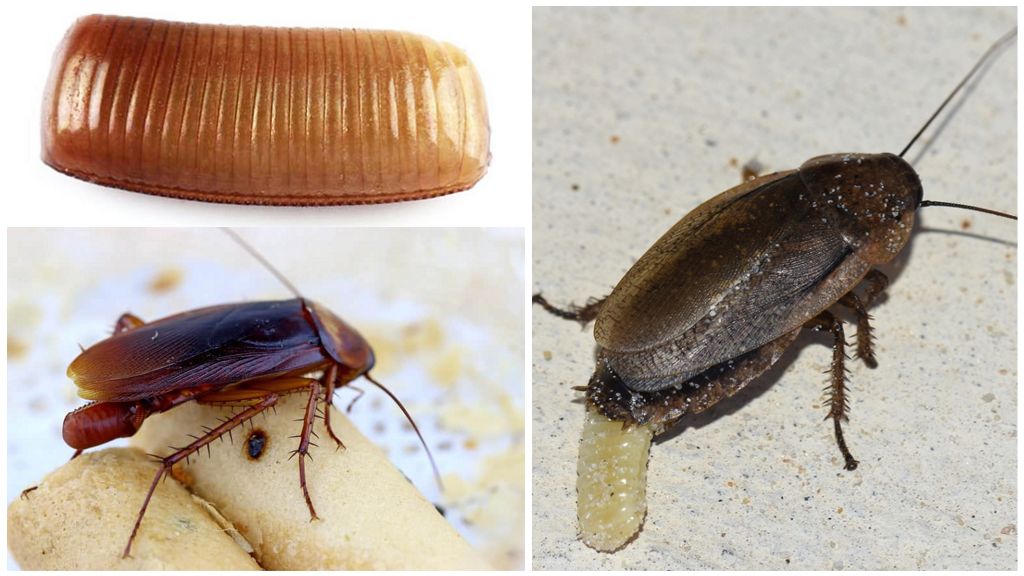
The ootek looks like a rounded block of yellow or dark brown color. Size varies depending on the type of cockroach. In the Prussian, this is a 8x5x2 mm bar.
Why you need an ootek
This is a way to protect offspring. The cocoon consists of a quick-setting protein secretion that glues together the entire masonry. The adhesive mass inside partially protects the future offspring from hitting a hard surface. The hard analogue of the chitinous cover prevents the masonry from drying out in the heat or drowning in the rain. The capsule protects the masonry from the cold. If the imago dies at -5 ° C, then the clutch remains alive even at -11 ° C. In modern conditions, the protective shell has another function: to save the offspring of pests from insecticides. Until the larvae come out of the ooteka, they are safe.
The formation of a new masonry
A cockroach can mate with a male only once in a lifetime.She retains the resulting seed material and uses it for the rest of her life. The female lives from 5 to 7.5 months. Further she continues breeding process independently and able to produce offspring 4 - 9 times. Eggs are formed in the abdomen, which also receives the “building material”: an adhesive secret. As the masonry is formed, the ooteca grows in size and more and more “extends” beyond the abdomen of the female. In the end, the cockroach looks like an insect was stuck in the rear end of the abdomen with a short shiny block of yellow-brown color and with rounded edges.
Further, in egg-laying species, some differences are observed. Black cockroaches get rid of the burden immediately after the formation of the full masonry. Two more months their offspring matures, being completely defenseless.
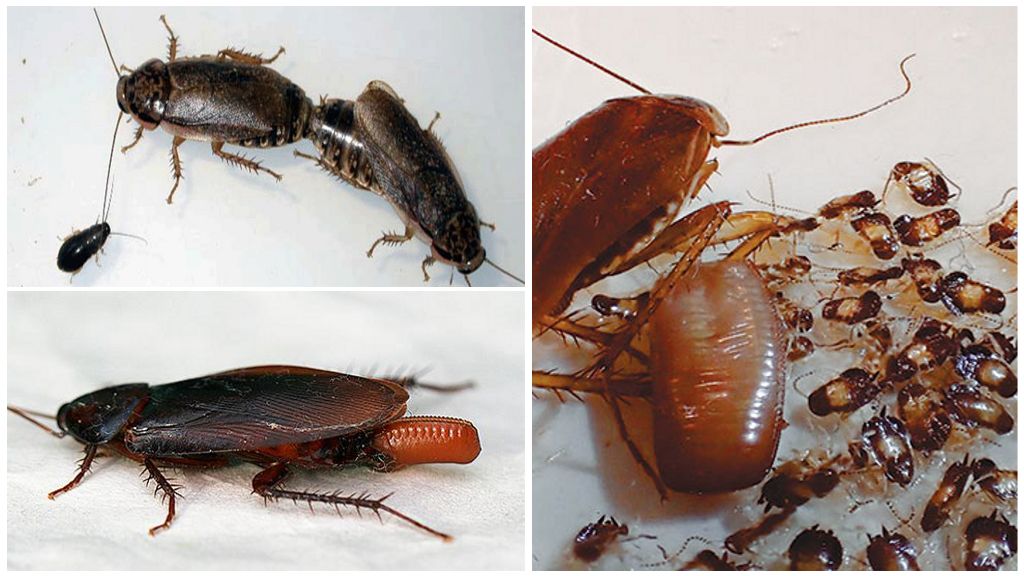
Interesting!
The Prussians take advantage of this circumstance and eat the eggs and newly hatched larvae.
The Prussians themselves have a different behavior. They have a better developed maternal instinct. With eggs, the female cockroach runs until the masonry ripens. Larvae hatch 30 to 80 days after the final capsule formation.
The rate of development of a new generation of insects depends on the ambient temperature. But the Prussians here also have a high breeding rate. They have a ripening time of larvae of 14 - 35 days. The optimum temperature for the development of larvae is + 30 ° C. Humidity is also important. Dry cockroaches are contraindicated.
Masonry places
In nature, cockroaches make masonry:
- in moist forest litter;
- in crevices of stones;
- in rotting wood.
There are no such places in the apartment. But the capsule cannot be seen lying in the middle of the kitchen. All cockroaches are nocturnal insects. In the apartment during the day they hide in dark corners. Perfect habitat for domestic parasites - a cabinet under the sink and a stove that never moves away from the walls. Females mainly lay their eggs in the apartment there. You can find the ooteca elsewhere, but it will always be a dark, secluded place. The capsule lying around was lost by the cockroach at the time of danger.
The birth of a brood
The larva develops in the egg while it contains nutrients. As the larva grows, nutrition ends. A cockroach gnaws at both shells: eggs and ooteks, and goes outside.
In ovoviviparous everything looks as if the larvae are really born, bypassing the stage of the egg. Some ovoviviparous species even show the beginnings of caring for offspring: young growth hides under the abdomen for some time and only then runs away in different directions.
The egg-laying picture is slightly different. It can be considered on the example of two types of home cockroaches: black and red:
- Since the black one drops the capsule long before the young growth occurs, it has a standard course of the process: the larvae hatch from the eggs, gnaw through the wall of the common capsule and scatter where.
- Prusak wears his capsule until the larvae hatch. It may seem that the female gives birth to live cubs, but in fact young cockroaches emerge from eggs hidden in the ooteca.
Interesting!
Immediately after hatching, the young growth is white and darkens only after half an hour.
Before becoming adults, young animals shed 6 times on average. For all these procedures, young pests take about 2 months.
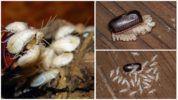
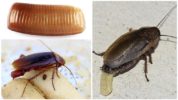
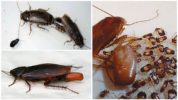
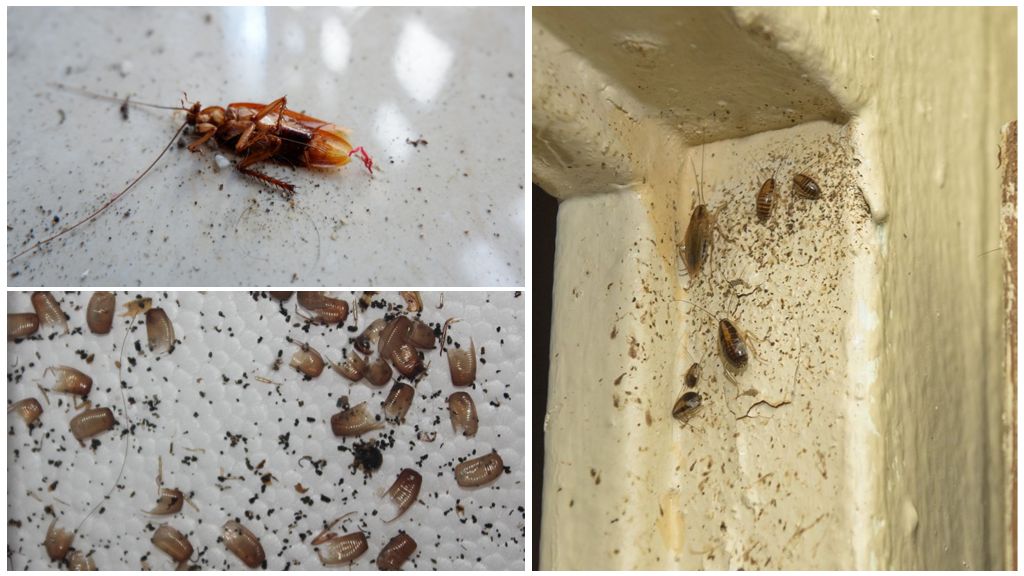

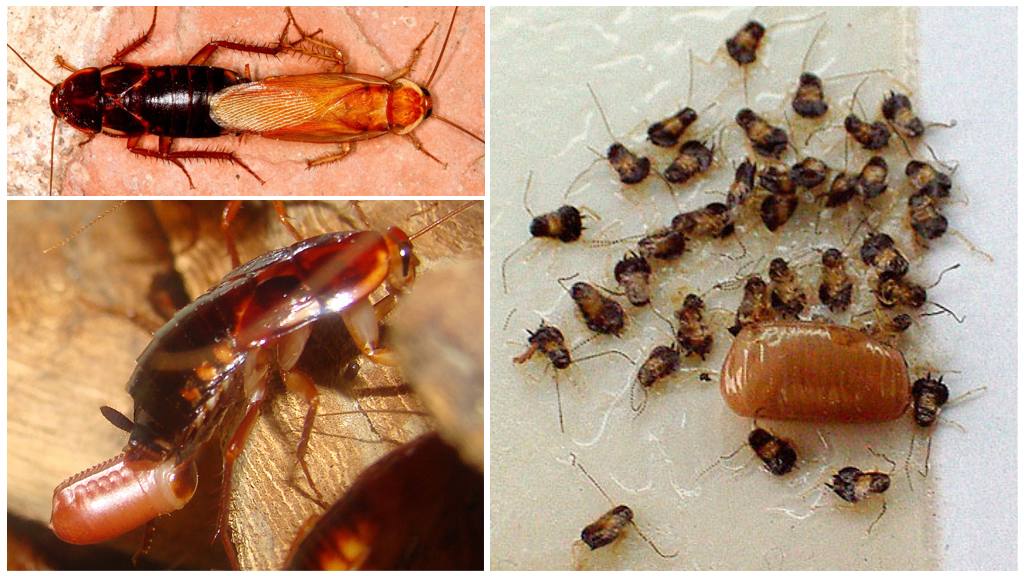
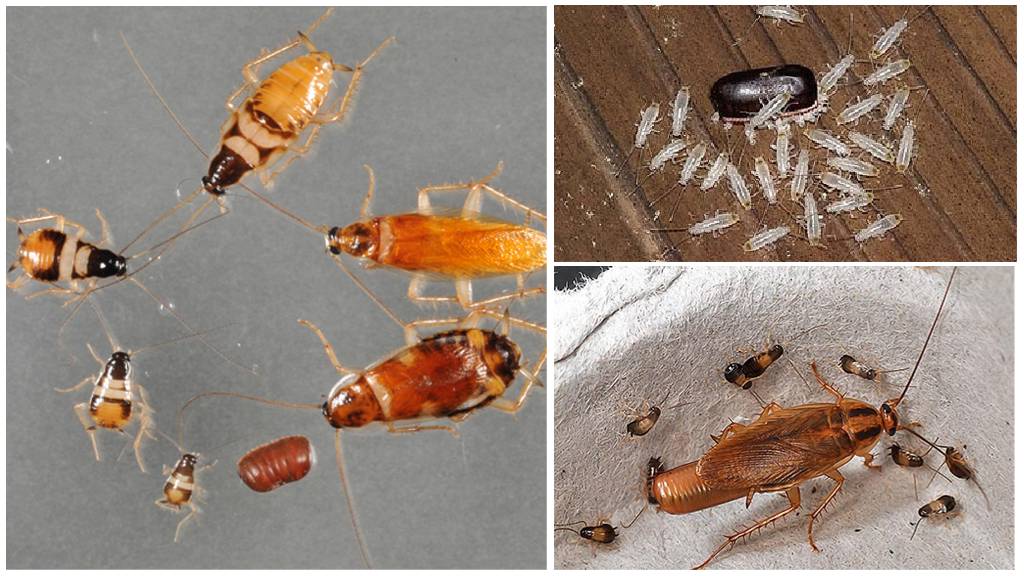
When cockroaches got into the apartment, I had to see empty ooteks. An unpleasant sight.